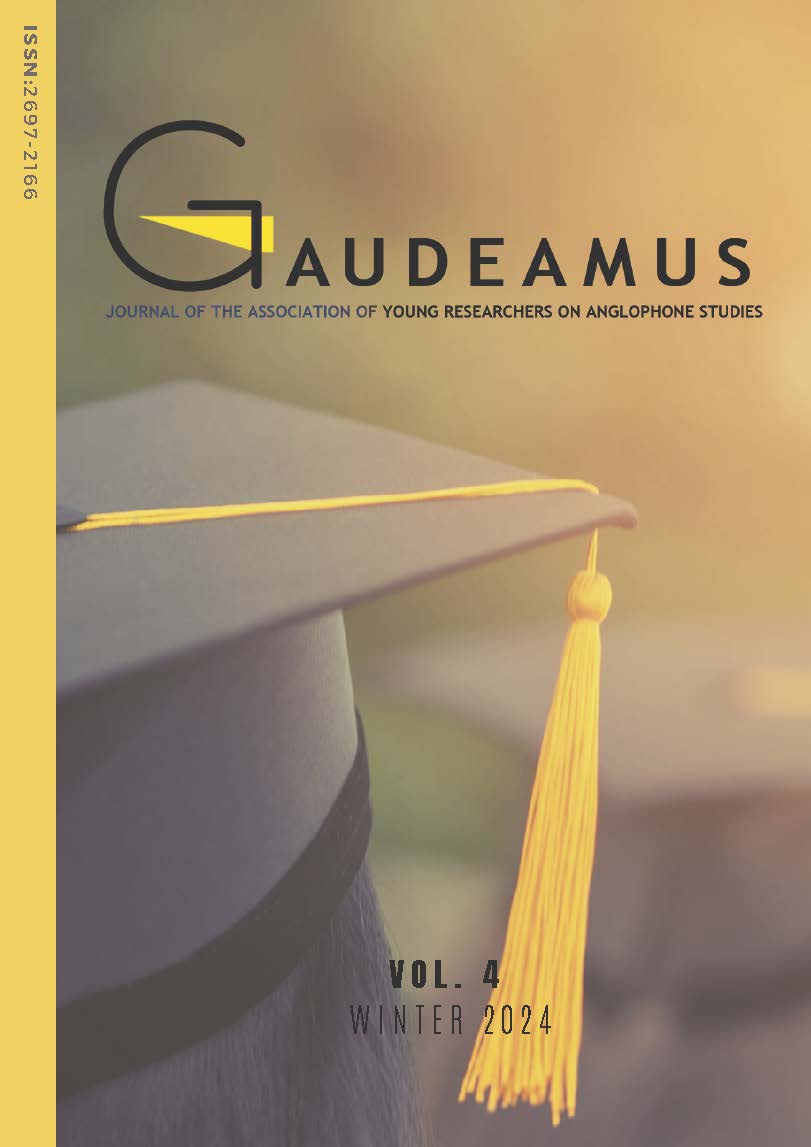Abstract
This paper examines the concept of the so-called linguistic “melting pot” in Australia as it is presented in Charles Adam Corbyn’s set of judicial reports Sydney Revels (The Eighteen-Fifties) of Bacchus, Cupid and Momus; Being Choice and Humorous Selections from Scenes at the Sydney Police Office and Other Public Places, during the Last Three Years (1854). It has been taken as a basis for the study of Early Australian English by scholars like Taylor (2001), Kiesling (2006) and Burridge (2010). They have analysed some of the varieties that Corbyn represented, including Irish English, Cockney, and Scottish English, and they have tried to analyse the speech of those people whose place of origin is not indicated by Corbyn. They all concluded that he was aware of this extensive linguistic variation during the late 18th and early 19th centuries. However, these previous studies did not examine the rest of the varieties that Corbyn included in his reports: African American Vernacular English, New York English, and Chinese Pidgin English. This gap is worth noting considering that the gold rush era, beginning in the 1850s, saw the arrival of large numbers of Chinese and American miners and companies (Burridge 2020, 176). Given that it was still a period where Australian English was not fully standardized, this paper aims at finding possible evidence for Chinese Pidgin, AAVE, or New York English influence in the Early Australian English period considering Corbyn’s work. To do so, a corpus-based analysis of the reports containing linguistic material from these varieties was carried out. The analysis was performed considering the phonological, grammatical, and lexical features appearing in the reports, with the aim of shedding light on these varieties and their influence on the formation of an emerging variety of Australian English. Results were contrasted and compared with the Oxford English Dictionary and various linguistic handbooks and glossaries containing information about the different dialects. Finally, it was concluded that, although humour is employed to caricature speakers, Corbyn's strategies for representing dialect in writing were notably objective. However, further research on the field will be necessary to achieve solid conclusions, regarding scarcity of data.
References
Agha, Asif. 2003. The Social Life of Cultural Value. Language and Communication, 23: 231-273.
Advani, Arun, and Bryony Reich. 2015. “Melting Pot or Salad Bowl: The Formation of Heterogeneous Communities.” IFS Working Papers, 15:30.
Beal, Joan C. 2004. “Beyond Standard English: Varieties of English in the Later Modern Period.” English in Modern Times, Routledge: 190-220.
Berray, Mohamed. 2019. “A Critical Literary Review of the Melting Pot and Salad Bowl Assimilation and Integration Theories.” Journal of Ethnic and Cultural Studies, 6.1: 142-151.
Burridge, Kate. 2010. “A Peculiar Language. Linguistic Evidence for Early Australian English.” Varieties of English in Writing. Ed. Raymond Hickey. John Benjamins: 295-347.
———. 2020. “History of Australian English.” Australian English Reimagined: Structure, Features and Developments. Eds. Louisa Willoughby and Howard Manns. New York: Routledge: 175-192
——— and Bernd Kortmann. 2004. “Introduction: Varieties of English in the Pacific and Australasia.” A Handbook of Varieties of English. Eds. Edgar W. Schneider et al. Mouton de Gruyter: 567-574.
Corbyn, Charles Adam. 1854. Sydney Revels (The Eighteen-Fifties) of Bacchus, Cupid and Momus; Being Choice and Humorous Selections from Scenes at the Sydney Police Office and Other Public Places, during the Last Three Years. Sydney: Ure
Smith.
Crystal, David. 1980. A Dictionary of Linguistics and Phonetics. Blackwell.
———. 2004. The Stories of English. Penguin Group.
Edwards, Walter F. 2004. “African American Vernacular English: Phonology.” A Handbook of Varieties of English. Eds. Edgar W. Schneider et al. Mouton de Gruyter: 383-392.
“Gold Rushes: 1851: Gold Rushes in New South Wales and Victoria Begin.” National Museum Australia. 8 F
Hall, Robert A. 1944. “Chinese Pidgin English Grammar and Texts.” Journal of the American Oriental Society, 64.3: 95- 113.
Jenkins, Jennifer. 2009. World Englishes. A Resource Book for Students. Routledge.
Korhonen, Minna. 2020. “American Influences on Australian English.” Australian English Reimagined: Structure, Features and Developments. Eds. Louisa Willoughby and Howard Manns. New York: Routledge: 193-209.
Kortmann, Bernd, et al. (Eds.) 2020. The Electronic World Atlas of Varieties of English. Web. <http://ewave-atlas.org> [Accessed on January 17, 2023].
Kiesling, Scott F. 2006. “English in Australia and New Zealand.” The Handbook of World Englishes. Blackwell: 74-89.
National Museum Australia. 2023. “Gold Rushes: 1851: Gold Rushes in New South Wales and Victoria Begin.” Web. <https://www.nma.gov.au/defining- moments/resources/gold-rushes> [Accessed on December 13, 2023].
Proffitt, Michael (Ed.). 2000-. Oxford English Dictionary Online. University of Oxford. Web. <https://oed.com/> [Accessed on January 17, 2023].
Taylor, Brian. 2001. “Australian English in Interaction with Other Englishes.” English in Australia. Eds. David Blair and Peter Collins. John Benjamins: 317-340.
Trudgill, Peter. 2004. New-Dialect Formation. The Inevitability of Colonial Englishes. Edinburgh: Edinburgh University Press.
Schneider, Edgar W. 2003. Postcolonial English. Varieties around the World. Cambridge: Cambridge University Press.

